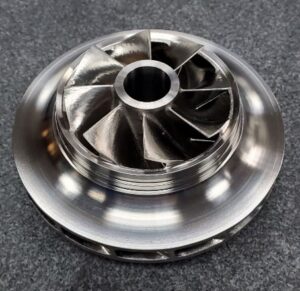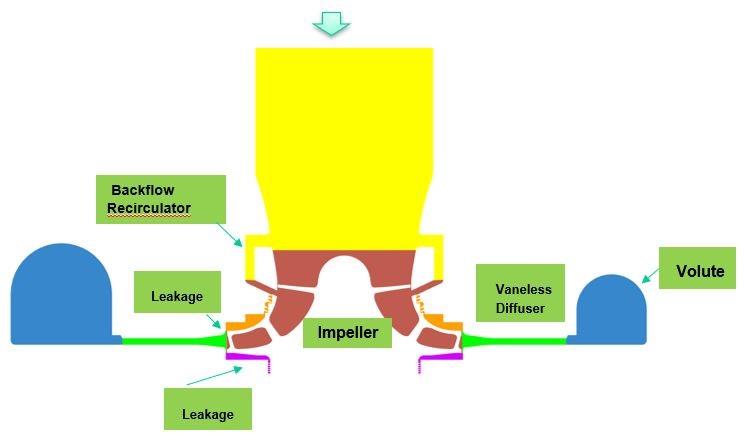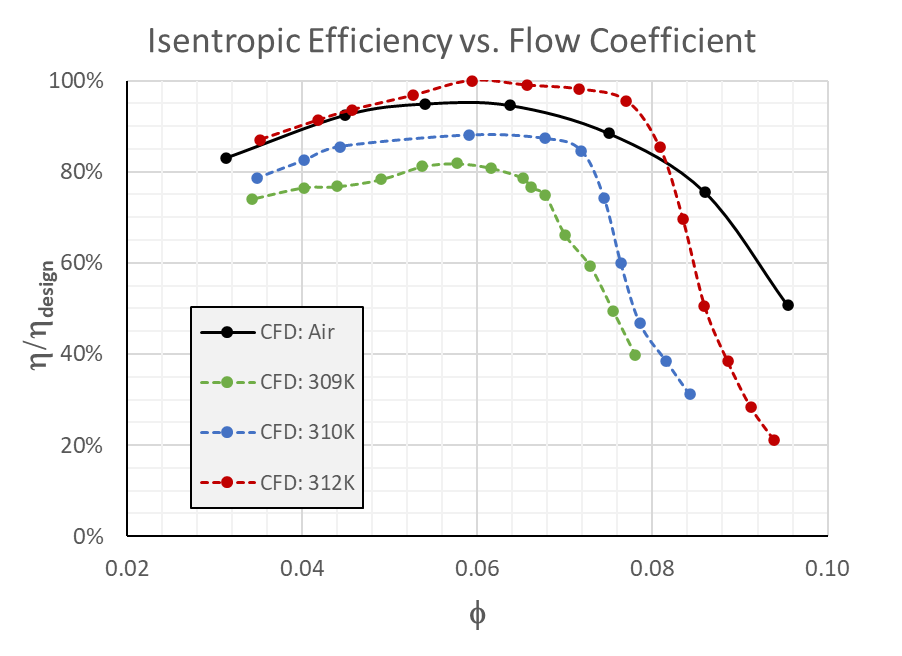Compressor Benchmark
High-fidelity aerodynamic analysis has been demonstrated for mean performance and unsteady dynamics in a sCO2 compressor designed by Hanwha Power Systems Americas for a 10 MWe Concentrating Solar Power plant. Simulations were performed with CRUNCH CFD software tool that was matured to accurately model near critical real fluid effects in sCO2.
The compressor system has been designed for stable wide range operation to account for inlet excursions and transients that may occur in an air-cooled CSP environment. The first stage main compressor features a shrouded impeller with a self-recirculating casing treatment over the unshrouded inducer section, splitter blades in the shrouded section, and a vaneless diffuser leading to a volute.
The domain of the complete compressor configuration that was simulated is shown to the right. There are six components or modules in the computational model:
- the inlet section with recirculating casing treatment (yellow)
- impeller (brown)
- leakage path (orange)
- leakage path (purple)
- diffuser (green)
- volute (blue)


Pre-Test Steady Performance Predictions
- Six coupled solver modules with mixing plane interface between modules
- Implicit time-marching Gauss-Seidel Solver
- k-ε turbulence model with wall-functions
- NIST table: 3001 points in temperature and 5001 points in pressure
- Simulations for the sCO2 compressor at design inlet conditions were undertaken at various mass flow rates to predict the performance

Unsteady Dynamic Simulations
Unsteady simulations were conducted at the design inlet temperature case 310 K for various flow coefficients. At the high flow coefficient, a periodic growth and decay of the liquid mass region was observed as the fluid goes from full-flowing to a blocked inlet where the liquid mass fraction covers a large fraction of the splitter blade inlet eye. The mass flow history at the inlet indicates fluctuations of 10% relative to the mean value that results from the condensation growth and decay at the inlet throat. This indicates that a system wide surge condition is arising due to a coupling of the pressure wave with the condensation phase change where the phase change amplifies the pressure wave and generates in-phase mass flow fluctuations.
Hosangadi, A., Weathers, T., Liu, J., Pelton, R., Wygant, K., and Wilkes, J. (October 14, 2022). "Numerical Predictions of Mean Performance and Dynamic Behavior of a 10 MWe SCO2 Compressor With Test Data Validation." ASME. J. Eng. Gas Turbines Power. December 2022; 144(12): 121019. https://doi.org/10.1115/1.4055532
